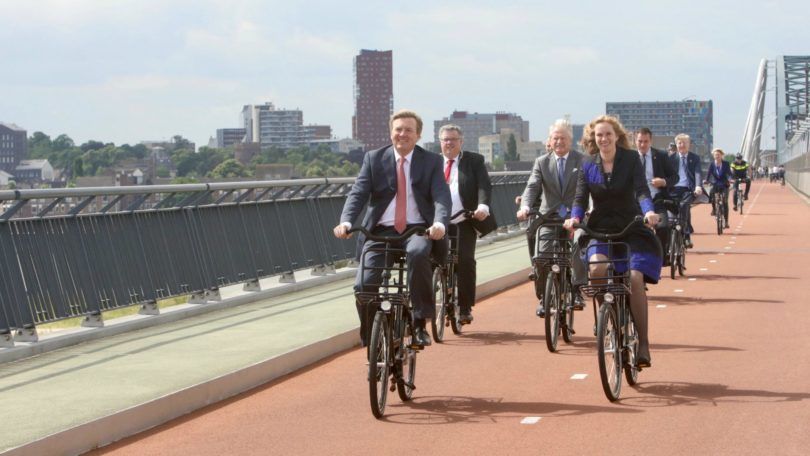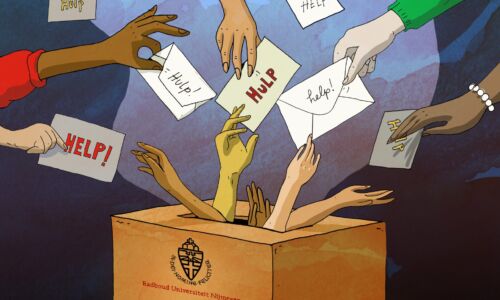How the Netherlands became a cycling country
-
 This week, the king cycled down part of the RijnWaalpad. Photo: Velo-city
This week, the king cycled down part of the RijnWaalpad. Photo: Velo-city
Velo-city, the world's largest cycling conference, will be held in Nijmegen and Arnhem this week. Some 1,500 international cycling enthusiasts will flock to the region to admire the Netherlands' infrastructure and its knowledge of bicycles. But how did our country become a global cycling mecca?
The Netherlands has more bicycles than inhabitants (22 million compared to 17 million), making it the undisputed cycling capital of the world for several years now. Nijmegen-based spatial planner Karel Martens will explain the country’s cycling history between lectures held during the conference.
‘Bicycles are a part of everyday life in the Netherlands’, says Martens. ‘Parents feel a responsibility to teach their children how to cycle. That’s entirely unique to our country.’ To be fair, the Netherlands has a few advantages when it comes to cycling: it’s flat, densely populated, and the cities are relatively well-planned and compact. But our penchant for cycling also has historic roots.
‘People used to cycle all the time in cities around the world’
‘In the past, people used to cycle everywhere in cities around the world’, says Martens. ‘Despite the advent of the car, however, the Dutch continued to cycle more often than people from other countries. After the war, most Dutch people were relatively poor and couldn’t afford a car.’
Several decades later, pillarisation and the Dutch school system started to contribute to the Netherlands’ cycling culture. ‘Very few Dutch children use communal transport, like a school bus, to get to school. During the pillarisation process, Protestant children were forced to go to Protestant secondary schools, Christian children to Christian schools, and so on. But many of those schools weren’t within walking distance, so the children had to cycle. If cycling is a common aspect of your childhood, you’re more likely to do it with some regularity later in life.’
Jealousy
In light of this, the Netherlands seems like a logical venue for the Velo-city conference. After all, other countries can learn a lot from how things are done here. Right? According the Martens, this is only partially true. ‘Many countries are jealous of us, but don’t consider our advice to be particularly relevant. In some Dutch cities, thirty per cent of the population cycles, compared to just two per cent in other foreign cities. But we have a long-standing infrastructure to support our cycling culture. Other countries could learn more from countries that only recently started developing their infrastructures.’
In the past, cycling wasn’t always easy for school-age children. There were no separate cycling lanes, forcing cyclists to share the two-way roads with motorists. ‘And motorists just kind of did their own thing in those days. Many drove without consideration for other road users.’ The result? Up to three thousand traffic-related fatalities each year, many of them young cyclists. In 1973, the Stop de Kindermoord foundation was established to address this issue. ‘That foundation was extremely successful and huge strides were made to create separate cycling lanes, for example. That laid the foundation for our current network of cycling paths and cycling facilities.’



